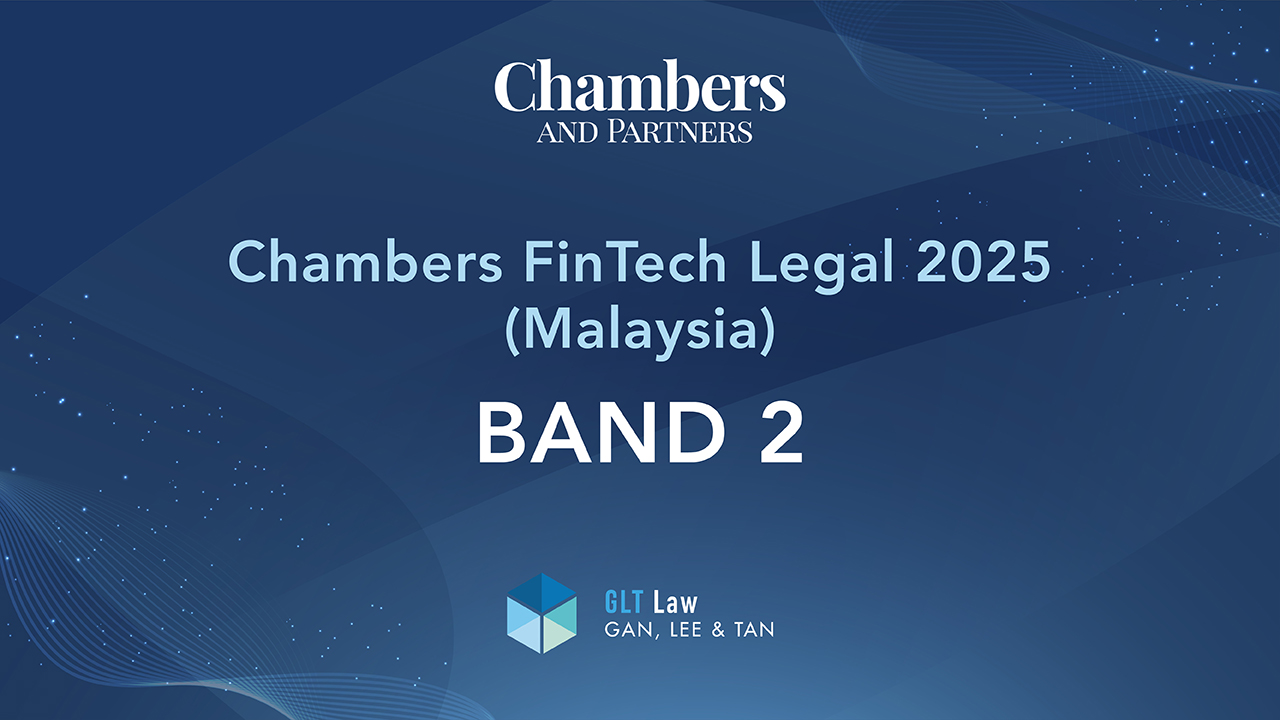
ESSENTIAL INSIGHTS FOR CYBER SECURITY SERVICE PROVIDERS: A GUIDE TO LICENSING REQUIREMENTS AND PENALTY AVOIDANCE
October 3, 2024
GLT Law ranked as Band 2 firm in Chambers FinTech Legal 2025 (Malaysia)
December 24, 2024Striking Out Under Order 18 Rule 19 (1) of Rules of Court 2012
- Introduction
Continuing from our previous article, this article shall focus on striking out pleadings under Order 18 rule 19(1) Rules of Court 2012 (“ROC 2012”).
What is a striking out application?
In short, it is an expedited process by which a litigant can move the court to summarily remove a set of pleadings from the proceedings.
Depending on how much of the pleadings are struck out, this can dispose of the entirety of a party’s suit. For example, if the entirety of the Statement of Claim is struck out, the whole claim will be disposed of.
However, since this process can lead to what is often described as a draconian result, there are time-tested methods for ascertaining whether a case truly warrants expeditious disposal.
In this regard, it is prudent to understand the governing provisions for such applications.
- Order 18 rule 19(1) ROC 2012
The Order 18 rule 19(1) ROC 2012 sets out 4 grounds for the striking out of pleadings as per the extract below:
(1) The Court may at any stage of the proceedings order to be struck out or
amended any pleading or the endorsement, of any writ in the action, or anything in any pleading or in the endorsement, on the ground that—
(a) it discloses no reasonable cause of action or defence, as the case may be;
(b) it is scandalous, frivolous or vexatious;
(c) it may prejudice, embarrass or delay the fair trial of the action; or
(d) it is otherwise an abuse of the process of the Court,
and may order the action to be stayed or dismissed or judgment to be entered accordingly, as the case may be.
- The General Principles of this Provision
A key principle to striking out applications is that they are not wantonly granted and only allowed in plain and obvious cases.
In the case of Bandar Builder Sdn. Bhd. & Ors v. United Malayan Banking Corporation Bhd [1993] 3 MLJ 36 the court held as follows:
“It is only in plain and obvious cases that recourse should be had to the summary process under this rule and the summary procedure can only be adopted when it can clearly be seen that a claim or answer is on the face of it ‘obviously unsustainable’.”
The case of Tuan Haji Ishak bin Ismail v Leong Hup Holdings Berhad & 5 Other Appeals [1996] 1 MLJ 661 further clarifies what the phrase ‘plain and obvious’ means:
“The word ‘plain and obvious’ also needs clarification. This case involved complex questions of company law. What may be ‘plain and obvious’ to a specialist in this field may not be so to another who does not have this specialized knowledge. The standard here is an objective one and implies that the perception required here is that of a person who has the required expertise. The right course was for the court to strike out a claim, even though it required a long and elaborate hearing before the court was satisfied that there was no cause of action.”
- The Governing Principles for the Four Limbs of this Provision
- Striking Out Under Order 18 r 19(a) of the Rules of Court, 2012 – No Reasonable Cause of Action
For a striking out application to succeed on this premise, the following principles must be noted, namely:
1) Firstly, no evidence is admissible on an application under this limb – Order 18 r. 19(1)(a) RC 2012.
2) Secondly, the cause of action must be found within the four corners of the Statement of Claim –Tuan Haji Ishak bin Ismail (supra).
3) It is within this framework where should all the allegations in the Statement of Claim be presumed to be true, a cause of action must be established without which the statement of claim would be liable to be struck out.
- Striking Out Under Order 18 r 19(b) of the Rules of Court, 2012 – Scandalous, Frivolous or Vexatious
On this premise, the courts will consider the harm occasioned by the scandalous, frivolous or vexatious pleading against its value as an admissible pleading in establishing a claim.
In Boey Oi Leng (t/a Indah Reka Construction & Trading) v Trans Resources Corporation Sdn Bhd [2001] MLJU 566; [2001] 4 AMR 4807, this is taken to mean wholly unnecessary, and not just unpleasant allegations. Therefore, the sole question is whether the matter alleged to be scandalous would be admissible in evidence to show the truth of any allegation in the pleading which is material with reference to the relief prayed.
In Raja Zainal Abidin bin Raja Haji Tachik & Ors v British-American Life & General Insurance Bhd [1993] 3 MLJ 16 it was ruled that the Court is not prevented from exercising its inherent jurisdiction to consider affidavit evidence in an application on this ground.
- Striking Out Under Order 18 r 19(c) of the Rules of Court, 2012 – Prejudice, Embarrass or Delay the Fair Trial of the Action
The mischief this provision intends to cure is in arming the courts with a means of removing elements that are intended to distract the courts from the true dispute before the courts.
In Sukatno v Lee Seng Kee [2009] MLJU 84; [2009] 3 MLJ 306 the court laid down the principle that parties must not offend against the rules of pleading which have been laid down by law.
Whereas Duta Arif Sdn Bhd & Ors V Chartered Development Corp & Ors [2008] 6 MLJ 139; [2007] MLJU 515 establishes that if a party introduces a pleading which is unnecessary and it tends to prejudice, embarrass and delay the trial of the action, it then becomes a pleading beyond his right. This is in line with the principles of pleading, namely that a pleading is meant to inform the other party of his opponent’s case and not confuse him or take him by surprise.
By Kang Bros Construction Sdn Bhd v WH Marketing (M) Sdn Bhd & Ors [2009] 1 LNS 90, a pleading is embarrassing where it is not clear what is being pleaded, for example where the defendant does not make clear in his defence how much of the statement of claim is admitted and how much is not.
- Striking Out Under Order 18 r 19(d) of the Rules of Court, 2012 – Abuse of Process
The courts generally take a firm stance against the abuse of process where it was laid down in the case of the Raja Zainal Abidin (supra) that the High Court has an inherent jurisdiction to prevent abuse of its process irrespective of whether it is expressly called for or not in an application under O 18 r 19 unless such application is limited solely to the ground that any pleading does not disclose a reasonable cause of action or defence.
- Conclusion
In a nutshell, striking out applications are an effective tool to dispose of pleadings that warrant a summary disposal, i.e. at least upon one of the four limbs to O.18 r. 19 of the Rules of Court 2012 being satisfied.
The core substantive principles as set out above, whilst not an exhaustive list of the entire set of principles nor authorities that govern striking out applications, are intended to portray the crux of the question that the courts will have to answer in deciding summary judgment applications.
For a detailed review of whether a set of proceedings you are involved in is suited for a striking out application or otherwise, it is best to refer the full facts of the claim to a lawyer for advice.




